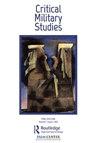Resilience before PTSD: or, Robert Vas vs The Bomb
Q1 Arts and Humanities
引用次数: 0
Abstract
ABSTRACT Resilience today is a highly instrumentalized weapon of the neoliberal state. Its purpose is the reduction and privatization of responsibility for emotions that conflict with the institutional interests of the western armed forces. This development dates back to the recognition of PTSD as an official diagnostic category in 1980, and to notions of civilian resilience developed in the 1990s and 2000s. This article seeks to historicize and relativize modern-day conceptions of resilience by exploring an earlier mid-twentieth century iteration which is anti-militaristic, non-institutional, and profoundly humanist. This version of resilience is rooted in the experiences of the Second World War and early Cold War generations as they attempted to cope retrospectively with their own traumatic memories. To develop this argument the article draws on recent critiques of resilience by Brett T Litz and Anne Boyar, on Jens Brockmeier’s notion of ‘subjunctive thinking’, and on a case study of the Anglo-Hungarian documentarist Robert Vas (1931–78). Of particular interest is To Die – To Live: The Survivors of Hiroshima (1975), Vas’s film collaboration with Robert and Mary Lifton, in which the director speaks with some of the hibakusha – survivors of the 1945 nuclear explosions – to better understand how they survived and continued to live.创伤后应激障碍前的复原力:或者,罗伯特·瓦斯vs炸弹
今天,韧性是新自由主义国家的一种高度工具化的武器。其目的是减少对与西方武装部队制度利益冲突的情绪的责任并将其私有化。这一发展可以追溯到1980年承认创伤后应激障碍为官方诊断类别,以及20世纪90年代和21世纪初发展起来的平民复原力概念。本文试图通过探索20世纪中期早期的反军国主义、非制度性和深刻的人文主义迭代,将现代韧性概念历史化和相对化。这种韧性植根于第二次世界大战和冷战早期几代人的经历,他们试图回顾自己的创伤记忆。为了发展这一论点,本文借鉴了Brett T Litz和Anne Boyar最近对弹性的批评,Jens Brockmeier的“虚拟思维”概念,以及英匈文献学家Robert Vas(1931-78)的案例研究。特别令人感兴趣的是瓦斯与罗伯特和玛丽·利夫顿合作的电影《去死——活着:广岛的幸存者》(1975),在这部电影中,导演与1945年核爆炸的一些幸存者进行了交谈,以更好地了解他们是如何活下来并继续生活的。
本文章由计算机程序翻译,如有差异,请以英文原文为准。
求助全文
约1分钟内获得全文
求助全文
来源期刊

Critical Military Studies
Arts and Humanities-History
CiteScore
1.90
自引率
0.00%
发文量
20
期刊介绍:
Critical Military Studies provides a rigorous, innovative platform for interdisciplinary debate on the operation of military power. It encourages the interrogation and destabilization of often taken-for-granted categories related to the military, militarism and militarization. It especially welcomes original thinking on contradictions and tensions central to the ways in which military institutions and military power work, how such tensions are reproduced within different societies and geopolitical arenas, and within and beyond academic discourse. Contributions on experiences of militarization among groups and individuals, and in hitherto underexplored, perhaps even seemingly ‘non-military’ settings are also encouraged. All submitted manuscripts are subject to initial appraisal by the Editor, and, if found suitable for further consideration, to double-blind peer review by independent, anonymous expert referees. The Journal also includes a non-peer reviewed section, Encounters, showcasing multidisciplinary forms of critique such as film and photography, and engaging with policy debates and activism.
 求助内容:
求助内容: 应助结果提醒方式:
应助结果提醒方式:


